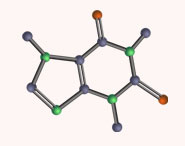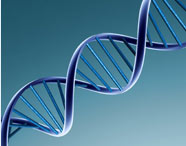


 علم الكيمياء
علم الكيمياء 
 الكيمياء التحليلية
الكيمياء التحليلية 
 الكيمياء الحياتية
الكيمياء الحياتية 
 الكيمياء العضوية
الكيمياء العضوية 
 الكيمياء الفيزيائية
الكيمياء الفيزيائية
 الكيمياء اللاعضوية
الكيمياء اللاعضوية 
 مواضيع اخرى في الكيمياء
مواضيع اخرى في الكيمياء
 الكيمياء الصناعية
الكيمياء الصناعية |
أقرأ أيضاً
التاريخ: 28-6-2019
التاريخ: 23-7-2018
التاريخ: 25-9-2020
التاريخ: 11-9-2019
|
If you mix a solution of sodium chloride with a solution of silver nitrate, electrostatic attraction between the Ag+ cations and Cl− anions is enough to bring them together into a stable, crystalline ionic lattice of silver chloride, which precipitates from solution. Both ions are of course surrounded by electrons, but the deficit of negative charge in the Ag+ cation (one electron short of the full Ag complement of 47) is enough to overcome the repulsion between the rest of the electrons. Direct reaction of a cation and an anion is rare with organic molecules because there are relatively few stable organic anions, and even fewer stable organic cations. A more common cause of organic reactions is attraction between a charged reagent (a cation or anion) and an organic compound that both possess a dipole. An example that we shall explore in this chapter (and which decorates the cover of this book) is the reaction between a carbonyl compound such as formaldehyde (methanal) and one of those few stable organic anions, cyanide (−CN, in the form of its salt NaCN). The carbonyl group of formaldehyde is polarized because oxygen is more electronegative than carbon (see p. 103). The negative cyanide ion is attracted to the positive end of the carbonyl group dipole. Actually, it isn’t necessary for either reagent to be charged. Water also reacts with formaldehyde and this time it is the lone pair of electrons—the non-bonding pair of electrons located on the oxygen atom of the uncharged water molecule—that is attracted to the positive end of the carbonyl dipole.



|
|
|
|
حقن الذهب في العين.. تقنية جديدة للحفاظ على البصر ؟!
|
|
|
|
|
|
|
"عراب الذكاء الاصطناعي" يثير القلق برؤيته حول سيطرة التكنولوجيا على البشرية ؟
|
|
|
|
|
|
|
المجمع العلمي يعقد اجتماعاً لمناقشة إطلاق مشروع الدورات القرآنيّة الصيفيّة
|
|
|